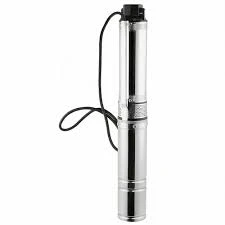Dec . 01, 2024 07:34 Back to list
12V Submersible Pump for Efficient Water Transfer and Aquatic Applications
Understanding 12 Volt Submersible Pumps
Submersible pumps play a crucial role in various industries and applications, especially where water needs to be pumped from lower levels to higher elevations. Among these, the 12-volt submersible pump has gained significant popularity due to its versatility, efficiency, and ease of use. This article explores the features, applications, and benefits of the 12-volt submersible pump, offering insights for those considering implementing this essential equipment.
What is a 12 Volt Submersible Pump?
A 12 volt submersible pump is a type of pump designed to be submerged in water to lift it from a lower level to a higher one. What distinguishes the 12-volt pump from others is its power source; it operates on 12 volts DC, which is usually compatible with car batteries, solar panels, and other low-voltage sources. This makes it particularly useful for off-grid installations, remote areas, and situations where traditional power sources are unavailable.
Key Features
1. Compact Design Most 12-volt submersible pumps are compact, making them easy to transport and install. Their small size allows them to fit into tight spaces where larger pumps cannot.
2. Durability These pumps are designed to withstand harsh environments, featuring corrosion-resistant materials that ensure longevity. Many are built to prevent clogging, allowing them to handle dirty water with larger sediments.
3. Self-Priming Many models have a self-priming feature that allows them to start pumping water without needing manual priming. This feature is particularly beneficial in situations where water intake may fluctuate.
4. Quiet Operation Unlike some other pump types, 12-volt submersible pumps typically operate quietly, making them suitable for residential applications and areas where noise could be a concern.
Applications
12-volt submersible pumps are versatile and can be used for a variety of applications, including
- Water Transfer They are commonly used to transfer water from one location to another, whether it’s filling a tank, emptying a pool, or relocating water in agricultural settings.
12 volt submersible pump

- Dewatering These pumps are ideal for dewatering flooded basements or construction sites, quickly and efficiently removing excess water.
- Irrigation In agriculture, 12-volt submersible pumps are used to irrigate fields, drawing water from wells, ponds, or rivers.
- Aquaculture and Hydroponics They are also employed in systems that require water circulation, such as aquariums, fish farms, and hydroponic gardens.
- Emergency Situations In times of flooding or natural disasters, these pumps become invaluable for rapidly removing water, thus preventing property damage.
Benefits
Choosing a 12-volt submersible pump comes with several advantages
1. Energy Efficiency Operating on low voltage allows for reduced energy consumption, making it environmentally friendly and cost-effective for users, especially when powered by renewable energy sources like solar panels.
2. Easy Installation Given their design and the availability of portable models, installation is often straightforward, even for users without extensive plumbing experience.
3. Enhanced Portability The compact nature of these pumps allows them to be easily transported, making them ideal for various job sites, recreational activities such as boating or camping, and emergency response scenarios.
4. Versatile Power Options The ability to run off batteries means that these pumps can be used in locations without access to standard electrical outlets, providing a reliable pumping solution anywhere.
Conclusion
The 12-volt submersible pump represents a key asset across a wide range of applications, providing efficient, reliable performance in water transfer and management tasks. Its energy efficiency, portability, and versatility make it an excellent choice for homeowners, farmers, and professionals alike. Whether for irrigation, emergency dewatering, or water transfer in remote locations, the 12-volt submersible pump continues to be a vital tool in modern water management solutions. As technology advances, these pumps are likely to evolve further, offering even more features and capabilities to meet the growing needs of users around the world.
-
Submersible Water Pump: The Efficient 'Power Pioneer' of the Underwater World
NewsJul.01,2025
-
Submersible Pond Pump: The Hidden Guardian of Water Landscape Ecology
NewsJul.01,2025
-
Stainless Well Pump: A Reliable and Durable Pumping Main Force
NewsJul.01,2025
-
Stainless Steel Submersible Pump: An Efficient and Versatile Tool for Underwater Operations
NewsJul.01,2025
-
Deep Well Submersible Pump: An Efficient 'Sucker' of Groundwater Sources
NewsJul.01,2025
-
Deep Water Well Pump: An Efficient 'Sucker' of Groundwater Sources
NewsJul.01,2025
-
 Submersible Water Pump: The Efficient 'Power Pioneer' of the Underwater WorldIn the field of hydraulic equipment, the Submersible Water Pump has become the core equipment for underwater operations and water resource transportation due to its unique design and excellent performance.Detail
Submersible Water Pump: The Efficient 'Power Pioneer' of the Underwater WorldIn the field of hydraulic equipment, the Submersible Water Pump has become the core equipment for underwater operations and water resource transportation due to its unique design and excellent performance.Detail -
 Submersible Pond Pump: The Hidden Guardian of Water Landscape EcologyIn courtyard landscapes, ecological ponds, and even small-scale water conservancy projects, there is a silent yet indispensable equipment - the Submersible Pond Pump.Detail
Submersible Pond Pump: The Hidden Guardian of Water Landscape EcologyIn courtyard landscapes, ecological ponds, and even small-scale water conservancy projects, there is a silent yet indispensable equipment - the Submersible Pond Pump.Detail -
 Stainless Well Pump: A Reliable and Durable Pumping Main ForceIn the field of water resource transportation, Stainless Well Pump has become the core equipment for various pumping scenarios with its excellent performance and reliable quality.Detail
Stainless Well Pump: A Reliable and Durable Pumping Main ForceIn the field of water resource transportation, Stainless Well Pump has become the core equipment for various pumping scenarios with its excellent performance and reliable quality.Detail
